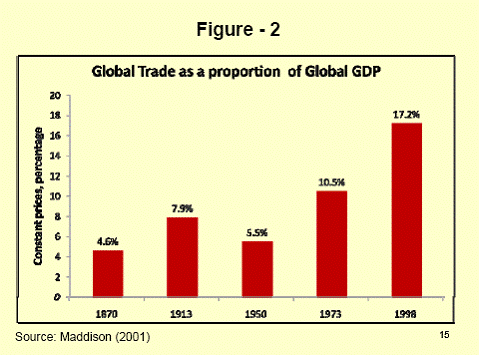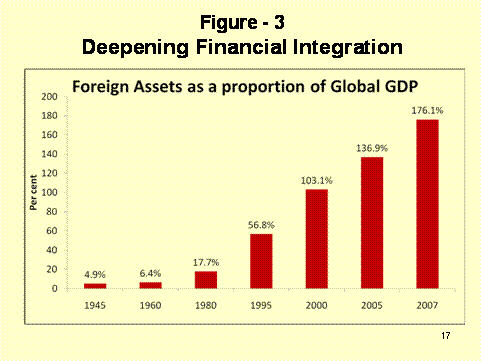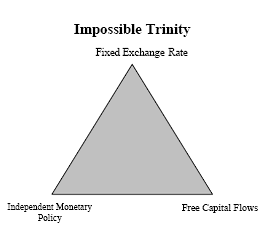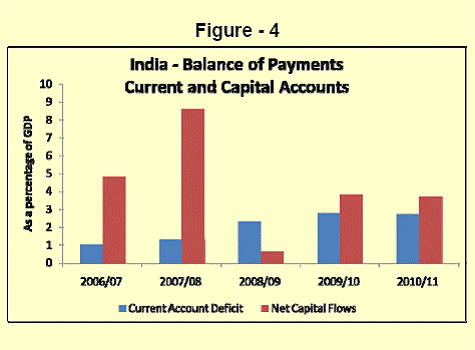 IST,
IST,


The Challenge of Globalization Some Reflections from the Reserve Bank Perspective
Dr. D. Subbarao, Governor, Reserve Bank of India
delivered-on मार्च 30, 2012
Thank you for inviting me to address the convocation of IIM, Bangalore. It is an honour to which I attach a lot of value. 2. First of all, heartiest congratulations to all the graduating students. Today marks a milestone in your lives. You will be leaving college with a degree in management, and not just any degree, but a degree from one of the most elite management schools in the country. You should be proud of what you have accomplished. Managing Change 3. As I see all of you graduating students in front of me, my mind goes back to my own graduation forty years ago, and to all the changes between my time and yours. The world has changed, India has changed, Bengaluru has changed and management education has changed in these four decades. Change, as they say, is the only constant in life. Managing change is by far one of the biggest challenges we face, both in our personal lives and our professional lives. Globalization 4. One of the big changes between my time and yours is globalization - the reduction in barriers to the flow of goods, money, people and ideas cutting across national, linguistic, cultural and social boundaries. When I graduated forty years ago, India was one of the most closed economies in the world. Today, we are much more integrated into the world, indeed more integrated than we tend to acknowledge. Just imagine, when I went abroad for the first time, 35 years ago, we could take out just $20. Today, every Indian can take out $200,000 per year under the Liberalized Remittance Scheme (LRS)2. That is a quantum change, not just in the numbers, but also in our world view. India’s Global Integration 5. A metric frequently used to measure the degree of a country’s global integration is the ratio of external trade to GDP (Figure - 1). That ratio has gone up over four times, from 8 per cent of GDP in 1972 to 37 per cent in 2011. Over this period, flow of money around the world has far outpaced the flow of goods. So, a more complete measure of a country’s global integration is the two way flow of goods and finance in and out of a country. That ratio has moved up nearly eight times in these four decades, from 14 per cent in 1972 to 109 per cent in 2011. What this means is that India’s trade integration has been deep; but its financial integration has been deeper.
Globalization - A Double Edged Sword 6. Globalization is a double edged sword - it offers immense opportunities but also poses ruthless challenges. Nothing illustrates this better than the global financial crisis of 2008/09. Recall that in the years before the crisis - during the period of the ‘Great Moderation’ - we had steady growth in advanced economies and accelerating growth in emerging and developing economies, and low and stable inflation all around. This was a consequence of globalization - in particular, of the tremendous boost to world production and productivity as a result of India and China joining the world labour markets. If the Great Moderation was the positive side of globalization, the financial crisis of 2008/09 and the Great Recession that followed were its negative side. That a bubble in a quintessentially non-tradeable sector like housing snowballed into a global financial crisis, taking a devastating toll on global growth and welfare, is a demonstration of the ferociousness of the forces of globalization. Managing Globalization 7. With degrees in hand today, you will be entering a world that is more globalized than the one I had spent my career in. Globalization, as we just noted, comes with benefits and costs. No matter what career you pursue or where you choose to work, you will have to learn to manage globalization in ways that will maximize its benefits and minimize its costs. I can hardly presume to give you a primer on that. I will attempt something less ambitious. I will bring the issue closer home and explain to you how we, in the Reserve Bank, confront the dilemmas of globalization. Before I do that though, I want to visit the debate on globalization just to set the context. Debate Around Globalization 8. To simply say that globalization has been a contentious issue will be banal. The debate surrounding globalization has been, in turn, lively, passionate, acrimonious, ill-defined, chaotic, noisy, constructive, untidy, and amorphous. What adjective you choose defines where you stand on the debate. But what is even more striking is that this is a debate that has frowned on moderation. For its supporters, globalization is the best way forward for collective global prosperity and welfare. For its critics, on the other hand, globalization is an unmitigated evil. They evoke powerful images, say of sweat shops in developing countries, degradation of the Amazon rain forest, erosion of peasant farming in poor economies and acid rain around the world’s industrial towns to buttress their argument. 9. Like most else in life, this debate too cannot be a binary issue. There is some validity to both sides of the argument, and the best way forward, as we just noted, is to maximize the positives and minimize the negatives. 10. The globalization debate has been broad based straddling several issues and themes. Here are some of the important ones:
11. I do not propose to visit these issues. This is well-trodden territory and I do not have any comparative advantage to add value to the debate. I do want to address just three questions though. I have chosen these three, in part because they are less familiar themes, and in part because the debates around these issues have been reshaped by some new developments. The three questions that I will address are:
Is globalization inevitable? 12. There is a widely held view that globalization is inevitable in today’s world of rapid technological progress and growing embrace of economic liberalization by countries. Most people who hold this view think that globalization is a uniquely twentieth century phenomenon and that it is progressing on a linear upward path. 13. That is a misperception. Far from being a twentieth century phenomenon, globalization has a long history dating back to the voyages of discovery of the 15th and 16th centuries and colonization by the European powers in the following centuries. Colonies have gone, but the trade and commerce spawned by the colonial empires have largely endured. 14. It is also not the case that globalization that started five hundred years ago has deepened on a steady, linear path. On the contrary, it has waxed and waned (Figure - 2).
15. As the data in Figure - 2 show, for about 150 years starting 1870, globalization has steadily deepened, peaking at around the outbreak of the First World War. It declined in the inter-war period, as a result of both changing political equations and the devastating toll of the Great Depression. This trend reversed after the Second World War, with globalization, not only in trade but also in finance, picking up pace over the last six decades (Figure - 3).
16. The question is, is there something special about this wave of globalization that sets it apart from past episodes and makes it inevitable and irreversible? The two inexorable forces cited to buttress this argument are technological progress, particularly the improvement in the speed and quality of communication and the dramatic decline in transport costs. 17. It is true that technological progress and declining transport costs offer opportunities for increasing the benefits of trade and strengthen the case for globalization. But the mere availability of opportunities is no guarantee that governments around the world will remain committed to open trade and open finance. That commitment could easily run into sands of political compulsions if a country perceives that it is losing comparative advantage or if the costs of globalization are seen to exceed the benefits. So, a more nuanced position to take would be that although today’s globalization is based on a stronger footing because of advances in technology and declining transport costs, political dynamics offer no guarantee that it will move along irreversibly. 18. That takes me to the second question that I want to address, about the threat to globalization arising from political compulsions. Is geography destiny? 19. In his best-selling book, Guns, Germs and Steel, Jared Diamond, an environmental biologist, argues that advanced civilizations originated and developed in Eurasia rather than in Africa, America or the Pacific because the former had the advantage of highly fertile lands and animals that could be domesticated. Having developed their agriculture by 1500, Europeans used their guns, germs and steel to dominate the rest of the world by military conquest and spread of disease. According to Diamond, it is not biology or race that explains the course of world history. Rather it is 'geography' that determines the rise and fall of civilizations. 20. This ‘geography is destiny’ theory which ruled for much of our recorded history is now seriously challenged by the latest sweep of IT-enabled globalization. Received wisdom today is that geography is irrelevant. No longer is a country's destiny tied down to its geographical location or its physical resources. 21. In the era of knowledge-propelled globalization, it is possible for countries to overcome handicaps of geography by exploiting their comparative advantage in human resources. That blue-collar jobs shift across geographic boundaries in pursuit of cheap hands has long been part of conventional wisdom. But what is new is that increasingly white-collar jobs, once considered safe from foreign competition, are now being offshored. Hence, the new catch phrases such as ‘death of distance’ and ‘conquest of location’. 22. The shifting comparative advantage is most visible in the services sector. No longer is it just low-end services such as data processing and call centres that are outsourced, but high end, skill-intensive services. Thus it is that financial analysts in Chennai provide tax consultancy to clients in Chicago; engineers in Buenos Aires design roads and bridges for Berlin; and radiologists in Manila provide medical diagnostics for patients in Manchester. On the other hand, it is low-end services such as laundry, janitor services and taxi driving that remain location tied. 23. This trend, running counter to the compulsions of geography, could have significant implications for globalization. The theory has been, and still is, is that mature economies will outsource low end jobs to emerging and developing economies, and will themselves move up the value chain to more productive jobs. The outsourcing of high end jobs implies that this story is not running according to script. 24. The number of jobs actually outsourced may be small, but the mere possibility that they could be outsourced has upset an unwritten social contract. This is because the very possibility of outsourcing erodes the bargaining power of workers and forces them to keep their wage demands subdued. For example, in the US, over the last decade, the share of wages in national income has steadily gone down while the share of corporate profits has increased, evidencing the declining bargaining power of workers. If this trend is not corrected, workers could get restive and demand protectionist measures. What this means is that free trade has the potential to raise global welfare, but its progress could be impeded by political compulsions at the national level. Geography could then become destiny yet again. Can/Should financial globalization be shunned? 25. There is an influential school of thought that takes a more nuanced approach to globalization - distinguishing between trade liberalization and financial liberalization. The argument is that while increased trade between countries is positive for both trading partners, the same need not necessarily be true of financial linkages. Hasty or imprudent financial liberalization, it is contended, is the main cause behind several financial crises over the last quarter century, including notably, the Asian crisis of the late 1990s. According to this view, while trade liberalization should be promoted and celebrated, countries should be cautious about financial liberalization. 26. This debate raises two questions. First, is financial liberalization inherently bad? And second, is it possible to pursue trade liberalization without financial liberalization? Let me briefly explain. 27. In support of trade liberalization, empirical evidence is put forward showing the causal relationship between trade openness and economic prosperity. It is also argued that openness to trade has spillover effects in terms of entrepreneurship, productivity improvement and development of physical and social infrastructure. It is not clear why one should presume that financial liberalization does not offer similar collateral benefits. Indeed, financial openness helps to deepen and broaden the financial markets, enhances competition, raises efficiency and improves corporate governance standards. On the other hand, it is true that there are certain pre-conditions to be met for financial liberalization to be a positive force. In particular, the government’s fiscal position should be sound, regulation and supervisory systems should be effective and there should be capacity for instituting internal controls within financial institutions. 28. My broad position on this issue is that financial liberalization can offer potentially huge benefits, including collateral benefits, as does trade liberalization. What is important to remember though, in promoting financial liberalization, is that the financial sector has no standing of its own; it derives its strength and resilience from the real economy. It is the needs of the real sector that should drive financial sector liberalization; not the other way round. Reserve Bank’s Perspectives on Globalization 29. Let me now turn to the dilemmas we face in the Reserve Bank on account of globalization. Monetary policy formulation used to be much simpler when we were a relatively less open economy. Now that we are more integrated into the world, in making our policies we have to reckon with global developments over which we have no control. Impossible Trinity 30. In conceptual terms, the challenge that the Reserve Bank faces on account of opening up the economy is best explained by the impossible trinity argument which asserts that a country cannot simultaneously maintain all three policy goals of free capital flows, a fixed exchange rate and an independent monetary policy. The impossible trinity, as students of economics have learnt for over a half century, has a strong theoretical foundation in the Mundell-Fleming model developed in the 1960s.
31. Given the Impossible Trinity trilemma, countries have made different choices. The most common case, typical across advanced economies, is to give up on a fixed exchange rate so as to run an open economy with an independent monetary policy. On the other hand, economies that adopt a hard peg give up on the independence of monetary policy. Examples include the currency boards set up by Hong Kong and, for a time, Argentina. More recently, responding to a rapid appreciation of the Swiss Franc as a result of the safe haven effect, Switzerland declared its commitment to defend a pre-announced exchange rate. 32. In contrast to advanced economies which opt for corner solutions, emerging economies here typically opted for middle solutions giving up on some flexibility on each of the variables to maximize overall macroeconomic advantage. India’s Approach to the Impossible Trinity 33. In India too, we have opted for a middle solution whose contours are the following: (i) we let our exchange rate be largely market determined, but intervene in the market to smooth excess volatility and/or to prevent disruptions to macroeconomic stability; (ii) our capital account is only partly open; while foreigners enjoy mostly unfettered access to our equity markets, access to debt markets is restricted; there are limits how much resident corporates and individuals can take out for investment abroad, but the limits are quite liberal; and (iii) because of the liberalization on the exchange rate and capital account fronts, we may forfeit some monetary policy independence. What the middle solution also implies is that we have to guard on all the three fronts with relative emphasis across the three pillars shifting according to our macroeconomic situation. Capital Flows 34. What does the impossible trinity mean in practical terms? Let us examine this in terms of capital flows. We do need capital inflows, of course, since we have a current account deficit (CAD). In an ideal world, we will want capital flows just about sufficient to finance our CAD; also we have an express preference for equity flows over debt flows and for long term flows over short term flows. But in the real world, we seldom find ourselves in such a sweet spot; capital flows are either too much or too little. 35. When capital flows are far in excess of CAD, the exchange rate appreciates out of line with fundamentals. And if the flows are volatile, that will be reflected in the exchange rate movement too. The Reserve Bank then has to make a judgement on whether or not to intervene in the forex market. This is not as straight-forward as it seems. If we intervene to buy foreign exchange in the market, volatility may be smoothed and exchange rate appreciation contained, but systemic rupee liquidity goes up, and that could add to inflationary pressures. 36. Inflation, as we know, results in a real appreciation of the currency. So, our effort to solve the problem of nominal appreciation of the currency, lands us with a problem of real appreciation. 37. To get around this problem, that is to contain inflationary pressures, we sometimes ‘sterilize’ the excess liquidity. This may contain inflation pressures, but raises a host of other problems. Sterilization puts upward pressure on interest rates which erodes our competitiveness. Higher interest rates also attract more capital flows, thus again, in a curious variant of the Dutch disease, accentuating the very problem that we were, in the first place, trying to resolve. As you see, there are no straight-forward solutions - every solution raises a fresh problem. 38. Volatile capital outflows pose similarly complex policy choices. In this case, the exchange rate tends to depreciate, again out of line with fundamentals exacerbating inflationary pressures and also hurting the government and corporates who have external debt obligations. In an outflow situation, financing of the current account deficit could also turn into a problem. 39. Both when inflows and outflows are out of line with our requirement, the Reserve Bank has to make a determination on whether or not to intervene in the foreign exchange market to contain volatility and prevent instability. As I explained above, no option is totally benign; no matter what option we follow, there are costs. Our effort always is to make an assessment of the forces driving the capital flows and act only to smooth volatility in the exchange rate movement and prevent disruptions to macroeconomic stability. In doing so, we have to be mindful of the inflation situation, the robustness of our foreign exchange reserves, and importantly, the credibility of our actions. Several Episodes of Volatile Capital Flows 40. Capital flows have been a particularly contentious problem over the last decade when we had episodes of both volatile inflows and outflows with the problem often reversing direction rather abruptly. Let me sketch this out to give you a flavour of the type of challenge we face. 41. In the years before the global crisis - during the Great Moderation - we had capital flows far in excess of our CAD, driven by excess liquidity in the global system, search for yield by investors and the promise of India’s growth prospects (Figure - 4). The rupee appreciated steeply denting our competitiveness. The Reserve Bank intervened in the market to buy foreign exchange and also sterilized the resultant rupee liquidity.
42. The capital inflow problem turned abruptly into an outflow problem with the outbreak of the financial crisis in September 2008. Unnerved by the extreme uncertainty, global investors exited India, as they did other emerging economies, to return to safe havens. The sudden exit put downward pressure on the rupee, and this time round we had to intervene in the foreign exchange market to contain the volatile depreciation of the rupee. 43. As the crisis started ebbing, the direction of the capital flows problem changed once again. The two speed recovery, quantitative easing by advanced economies, and importantly, their guidance that their easy monetary stance would prevail for an extended period drove global excess liquidity into emerging economies pushing up their exchange rates. This was the case for much of 2010 and early 2011. Emerging economies had to combat this through currency interventions as well as capital controls. One of the main items for discussion at the G-20 meetings all through this period was ways to prevent these ‘currency wars’. Emerging economies contended that financial stability is a global public good, and that advanced economies, in particular, must be mindful of the spillover impact of their domestic policies. 44. In the event, the ‘currency wars’ were short lived. As the euro-zone sovereign debt crisis deepened in the second half of 2011, global capital reversed direction yet again exiting emerging economies in search of safe havens. Emerging economy currencies, including the rupee, depreciated significantly. Between August 4, and December 15, 2011, the rupee depreciated by over 15 per cent although it has regained some loss since then. From the Reserve Bank, we had to intervene in the market to smooth the volatility of the exchange rate movement. 45. I have gone at some length to narrate the developments in terms of capital flows to demonstrate that not only is the problem big in and of itself, but also that the problem can change direction abruptly owing entirely to external sector developments even as there is no change in our fundamentals. Globalization - Challenges and Opportunities 46. You must by now have a fair idea of the type of challenges we face in the Reserve Bank on account of globalization. You must recognize though that as much as globalization poses complex policy challenges, it also offers immense opportunities. The economic reforms that provided the platform for India’s integration with the global economy helped in raising our growth rate and reducing poverty. Even as we are a large economy at an aggregate level, we are still a poor country as measured by per capita income and several social indicators. The challenge for your generation will be to accelerate India’s growth rate and make that growth inclusive. And you will need to manage that challenge in an increasingly globalizing India. I am sure you will find being a part of that endeavour intellectually exciting and emotionally fulfilling. 47. My best wishes to all of you for every success in your professional careers and for happiness and fulfillment in your personal lives. References: Crafts, Nicholas (2000): “Globalization and Growth in the Twentieth Century”, IMF Working Paper 00/44, International Monetary Fund, Washington DC. Diamond, Jared: Guns, Germs and Steel, Vintage, London, 1998 Maddison, Angus (2001): The World Economy: A Millennial Perspective (Paris: OECD) 2 This is over and above what can be taken out for current account transactions. |






















